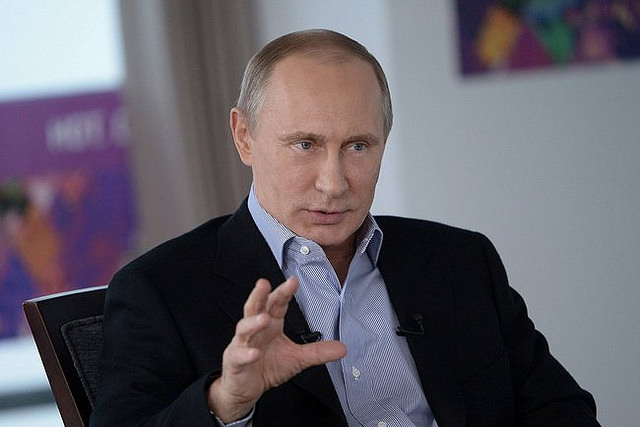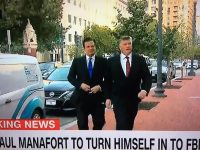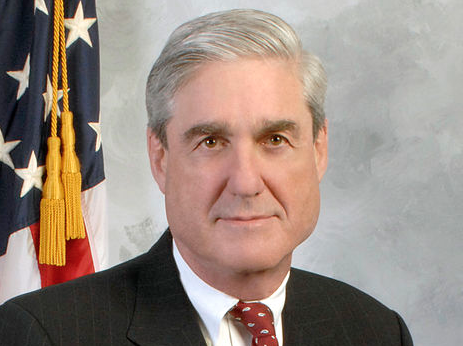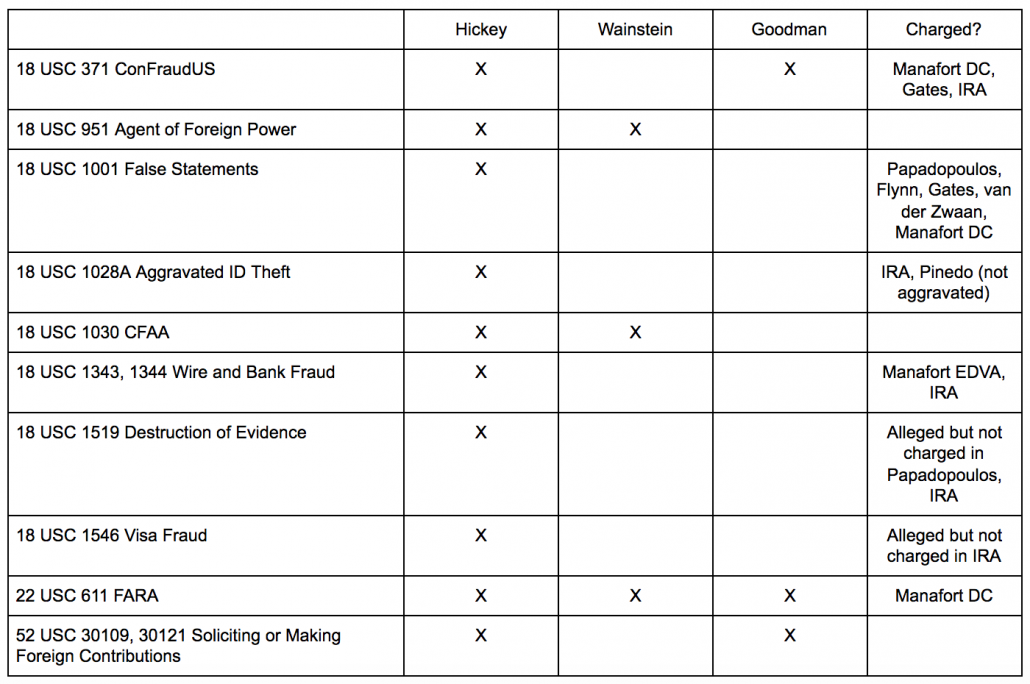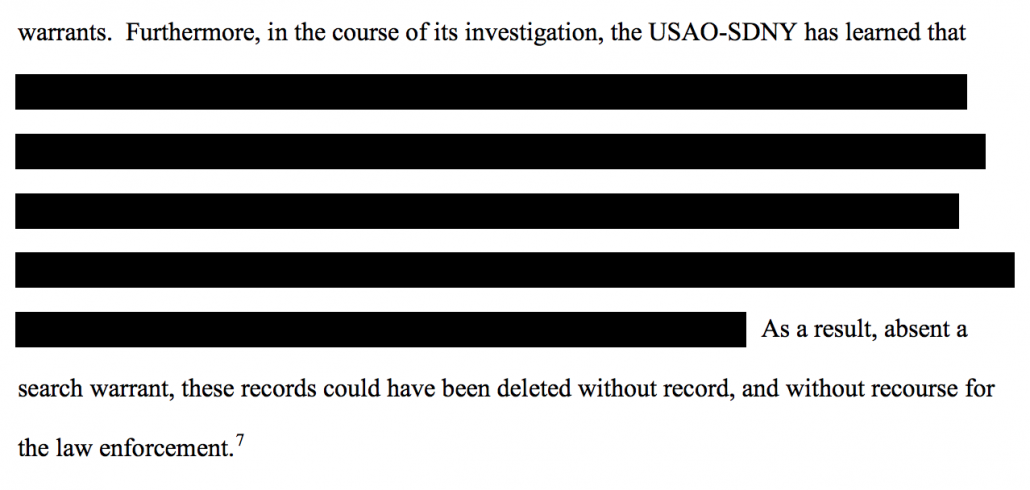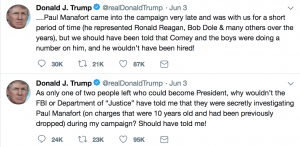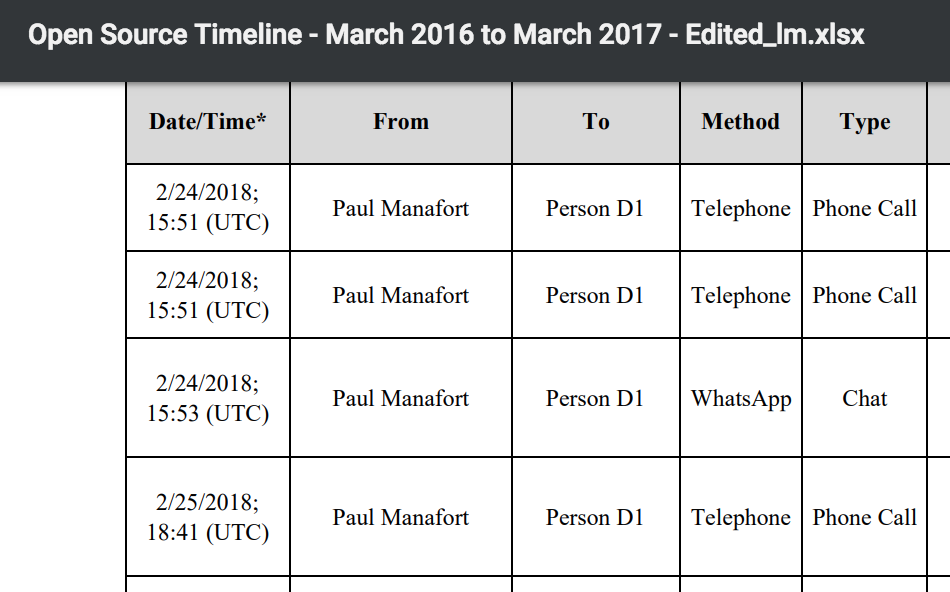Shorter Yevgeniy Prigozhin: Don’t Send the PII We Already Stole — Just Send the Intelligence
In this post, I described the Mueller team’s motion for a protective order that would keep sensitive information from the case against Concord Management away from its owner, Vladimir Putin crony Yevgeniy Prigozhin.
Concord’s lawyers have now responded with the performative aspect that has characterized their filings in this case. From a legal standpoint, they argue both that protective orders are an unusual thing (which seems utterly absurd on its face) and that withholding information from a co-defendant who has not presented himself before the court is not supported by case law (a proposition I await Mueller’s answer to judge).
For now, though, note that their demands have actually gotten worse than what, according to Mueller at least, they had already agreed to.
Mueller, as I noted, contended that Concord had agreed to keep all discovery in the United States, but objected to Mueller’s request to withhold it from Prigozhin. The US-restrictions showed up on their protective order this way:
Neither defense counsel nor any person authorized by this Court is permitted at any time to inspect or review Sensitive materials outside of the U.S. offices of Reed Smith LLP, without prior permission from of this Court. Defense counsel or a designated and identified employee of Reed Smith LLP must accompany any person at all times while he or she is reviewing Sensitive materials at U.S. offices of Reed Smith LLP, unless otherwise authorized by this Court.
[snip]
Sensitive materials shall not be viewed or stored on any device that is connected to or accessible from the Internet.
Sensitive materials may under no circumstances be transported or transmitted outside the United States.
But Concord has now changed its mind about the US restrictions.
Further, the Special Counsel attests to the Court that the defense has agreed “on many procedures designed to enable the government to turn over discovery,” Mot. at 2, while failing to tell the Court the truth; that any such concessions were made as part of a concerted effort by undersigned counsel to reach a stipulated agreement of this issue, and absent that stipulation there is in fact no agreement at all. Despite this fact, and as a courtesy to the Court only, Defendant Concord represents that it is willing to accept the draft protective order attached hereto as Exhibit A, which will permit it to protect its constitutional rights in defending this criminal case.
It calls the requirement that discovery remain in the US (it doesn’t address the demand that it remain firewalled from the Internet) a hostage situation.
The Special Counsel seeks the unprecedented process of prohibiting defense counsel from sharing or discussing any discovery with any co-defendant—including the only person affiliated with Concord named in the Indictment—unless those individuals come to the United States to become hostages in this political game of tit-for-tat. See ECF 24-1, proposed Protective Order at ¶ 2.
Perhaps even more interesting, having been told that Mueller will hand over everything because it is too unwieldy to strip Personal Identifying Information of victims and others, Concord not only says they don’t want it (though they caveat about whether they’ll eventually release it at trial), but that they refuse to accept it.
Not yet ashamed, the Special Counsel plays the personal identifying information (“PII”) card. See Mot at p. 9. However, undersigned counsel has already advised the Special Counsel that Defendant does not seek any personal identifying information that is irrelevant to the defense. The Special Counsel stated to undersigned counsel that it would not be possible to remove any such information from the discovery. But that is the Special Counsel’s problem, not Concord’s. And undersigned counsel will not accept any such information unless the Special Counsel can demonstrate that, in fact: 1) it is relevant to the defense of the case; 2) the Special Counsel intends to use the item in its case-in-chief at trial; or 3) the information was obtained from or belongs to Defendant. See Fed. R. Crim. P. 16(a)(1)(E). The Special Counsel’s reliance on the out of circuit case United States v. Johnson, 191 F. Supp. 3d 363 (M.D. Pa. 2016) provides no cover. To the contrary, Johnson, a drugs and firearms case, returns to the concept of an umbrella protective order that is unheard of in published opinions in this district, and further addresses PII which we are not seeking unless it is relevant to the defense.7
7 The Special Counsel’s description of the PII to undersigned counsel makes it difficult to understand how it could be relevant to the defense. The Special Counsel generally noted that some of the discovery contains financial account numbers of innocent individuals. As noted above, undersigned counsel refuses to accept or be responsible for any such irrelevant data. As to names, addresses and other personal information of the same or other individuals, undersigned counsel has no intention of making any such information public prior to trial.
Of course, Russia has already stolen a lot of this PII.
So effectively, what Prigozhin is saying is that he doesn’t want any of the PII he already stole; he just wants the intelligence showing what the US government knows about how he stole it.
Don’t get me wrong: the underlying legal issues here will be an interesting question. But the message — don’t send the PII we already stole, just send the intelligence — is quite simple.
Update: In a hearing on Friday, Friedrich expressed impatience that discovery hadn’t begun yet, but generally showed great deference to the government’s concerns about security. She set a deadline for the parties to agree on a protective order, but if the interim one she drew up until they agree on something is any indication, the Mueller team will generally get what they want. In particular, she prohibited the sharing of discovery with anyone not in Concord’s law firm, meaning they can’t share it with Prigozhin.
Pursuant to this interim order, the government shall initially produce the materials to defense counsel. In the first instance, and unless and until further order from this Court, defense counsel shall not further disclose the materials or their contents directly or indirectly to anyone except defense counsel, as defined above.
And she required sensitive materials to be firewalled from the Internet, and prohibited sensitive materials being transmitted outside the US.
The government shall provide Sensitive materialsto defense counsel in a password protected, electronic format. Sensitive materials shall not be copied or reproduced without prior permission from this Court, except that defense counsel may make copies for use exclusively by defense counsel in connection with this criminal case. Sensitive materials shall be maintained in a locked room at Reed Smith’s offices within the United States, when they are not in the actual possession of defense counsel. Sensitive materials shall not be viewed or stored on any device that is connected to or accessible from the Internet.
Sensitive materials may under no circumstances be transported or transmitted outside the United States.
She also endorsed the idea of a firewall counsel who could raise objections on sharing, and even suggested a special master for discovery here.
Update: Fixed protection for protective. h/t mw.

